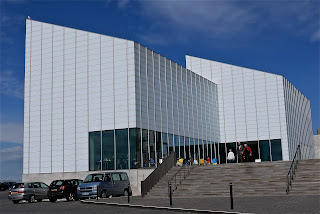Abbotsbury Sub-Tropical Garden
We walked through Abbotsbury in January on our Langton Herring to West Bexington leg of the South West Coast Path. We always meant to come back and see it properly - and today was the day.
Abbotsbury was the site of Benedictine Abbey founded in the 11th century. After the Dissolution of the monasteries the land and buildings came into the possession of Giles Strangways and is still owned by his descendants.
We started from the Sub-Tropical Garden founded by the first Countess of Ilchester (the family name of the Earls of Ilchester is Fox-Strangways) in 1765 as the kitchen garden of the now-demolished Abbotsbury Castle and embellished by later Earls.
We walked through the beautiful gardens and reached a newish viewpoint overlooking the Fleet, with Portland very clear in the background.
The next section allowed a lovely glimpse of St Catherine's Chapel in a gap between the trees, with gorgeous azalias in the foreground.
Having completed our circuit of the gardens, which really were excellent, we walked down the road towards Chesil Beach and followed the Coast Path in the reverse direction to last time to reach the track which leads down to the Swannery. This time we went to explore.
The Swannery is an artificial pond which dates back to at least 1393. The swans were originally reared as a source of food for the monastery. Nowadays it is the only managed colony of nesting mute swans in the world. We were lucky that it was the nesting season - although we were dismayed by the signs we saw in all directions calling people to come and see the "baby swans" - cygnets surely!
We now walked towards the village and took a path to the left leading up to St Catherine's Chapel. We were immediately confronted by this magnificent sycamore.
Emerging onto a grassy hillside we exercised our right to roam and headed straight up the slope towards the chapel. A great benefit of this approach was that we soon had a panoramic view of the village.
Unfortunately by now a sea mist had come in, so the chapel had to be photographed against a nebulous white background. The small but enormously solid chapel was built by the monks in the 14th century. It allowed the monks to withdraw from the monastery during Lent for private prayer and meditation.
We followed the path down the village and gained a good view of the church of St Nicholas. It is late 14th / early 15th century.
After a frankly disappointing lunch in the Ilchester Arms pub, we walked down the lane to see the massive Abbey Barn, now somewhat incongruously used as a children's play area. According to Pevsner it is one of the largest barns in England and dates from about 1400. It was 272 feet long and had two porched entrances. The timber roof is later.
We now retraced our steps to return to the picturesque High St. I particularly liked the Strangways (inevitably) Hall and the adjoining cottages. I think the Hall was probably once the school.
Distance: about 5 miles
Map: Explorer OL15 (Purbeck and South Dorset)
Conditions: sunny until the sea mist arrived
Rating: four stars
Flowers of the day
There was lots of Red Campion in hedgerows.
Climbing up the slope to St Catherine's chapel we saw several clumps of Common bird's-foot Trefoil, with its distinctive red buds. Apparently it is also known as eggs and bacon.
I have not been able to identify this beautiful pink plant which was growing in some profusion by the side of the main road through the village.
























































